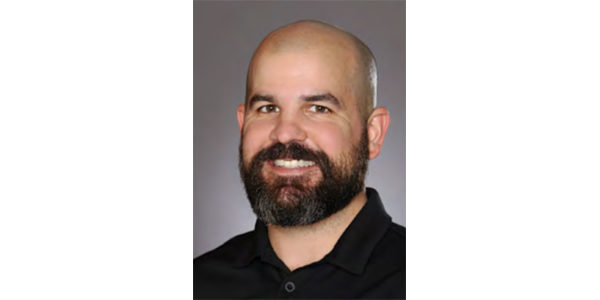Coming together for road safety: interview with Joshua Girard

The future holds few safe bets. But here's one: Globally, more motor vehicles will be in use 10 years from now than are today. More online orders mean more truck deliveries. More disposable income in developing nations means more commerce and more cars. Unfortunately, this may mean more carnage on the world's roads.
The mission of a group called "Together for Safer Roads" (TSR) is to ensure that unfortunate scenario never occurs. Founded four years ago, TSR is a coalition of well-known companies that have pooled their resources to improve global road safety. As a founding board member of TSR, Belgian brewing giant AB InBev is at the forefront of the effort and has contributed the learnings it has gleaned from operating its own private truck fleet.
Joshua Girard, global director, safety at AB InBev, spoke recently with Mark B. Solomon, DC Velocity's executive editor-news, about TSR's approach, his company's role in the organization, and the scourge of safety advocates everywhere: drivers distracted by mobile devices.
Q: Can you describe TSR's mission and what the companies in the group are doing to fulfill it?
A: Each year, 1.25 million people are killed and 50 million are injured on the world's roads. Road safety should be a shared responsibility between the public and private sector. TSR is a coalition of global private-sector companies whose mission is to improve road safety. We bring together members' knowledge, data, technology, and global networks to focus on areas that will make the greatest impact globally and within local communities. Our members leverage their private-sector insights to advance best practices for companies and their fleets, and we are aligned with the United Nations' Decade of Action for Road Safety.
Q: To what extent does your work focus on improving the safety performance of rigs and drivers, rather than passenger cars and the motorists who operate them?
A: To help ensure a safe fleet culture within our company, we work with our drivers to analyze roadways with the aim of avoiding dangerous areas, both before and during our drivers' journey. Each day, we build routes that are mapped into a telemetry system to help provide the safest route possible, ensuring our drivers remain safe at all times.
We're aware that our drivers might not always have the same route each day, which is why we run their routes through the pre-journey planning process. We find it's also really helpful to have a system that will sound an alert when approaching a designated hazardous area of the route—one that the driver may not be familiar with if it's a new route.
Q: What is AB InBev's role in TSR, and how has it engaged its private fleet network to help accomplish the group's objective?
A: AB InBev is a founding Governing Board member. We helped establish the coalition in 2014 out of a need for the private sector to step up and improve road safety by sharing knowledge, data, technology, and global networks. For example, in collaboration with TSR, AB InBev has helped develop a "Best Practices" series of reports, which aggregate TSR member companies' processes and guidelines for developing and managing corporate transportation programs. The series has shown that by using the latest technologies, the private sector can ensure its operations, fleets, and employee drivers are safe during transport.
Q: You have cast a global net in your efforts to improve road safety. How does the U.S. compare with other countries, both developed and developing, in road safety performance?
A: North America can be a challenging market. However, there are a lot of things working in our favor. Access to technology, transportation infrastructure, government regulations, and coalitions like TSR help to reduce risk and improve safe driving behavior. As a result, AB InBev has reported zero road fatalities in developed markets. In developing zones, we have been able to reduce fatalities by 41 percent compared with last year.
Q: In America, there has been much discussion over the extent to which truck-related crashes are caused not by the truck drivers but by the behavior of motorists. Does your research and analysis corroborate the view that much of the fault lies with motorists putting themselves and big rigs in harm's way?
A: We all have to do our part in reducing road fatalities. AB InBev drivers go through extensive training, and our management teams monitor driver behavior to provide positive guidance and reinforcement. Most motorists do not receive the level of training or continuous coaching a professional driver receives. Yet their vehicles can be just as dangerous.
We focus on providing coaching to our drivers on defensive driving techniques so they can anticipate other drivers' behaviors and safely maneuver their vehicle to prevent crashes. We are also piloting technology like collision-avoidance systems, fatigue monitoring, and cameras equipped to proactively identify road hazards and communicate to our drivers.
Q: Speaking of behavior, what are the truly serious areas that need to be corrected?
A: One driver behavior stands out as an epidemic: the use of mobile phones while driving. AB InBev is running a pilot project in which a device that blocks cellphone use is installed in the cabins of its fleet vehicles. This device will only allow navigation programs to run on the driver's phone, as well as single-touch, hands-free call answering. All other operations and programs are blocked from use, including texting, placing outgoing calls (apart from emergency numbers), and opening other apps.
Q: Virtually all big rigs in the U.S. are required to have electronic logging devices (ELD) installed to track a driver's compliance with federal hours-of-service regulations. Do you see that moving the needle in improving road safety here?
A: ELDs are a great tool. But they are just one way to monitor and manage fleet safety. We utilize telemetry technology in nearly all of our fleets to provide ongoing monitoring of driver behavior, with a focus on speed, rapid acceleration, rapid deceleration, and gravitational-force (G-force).
Speed limits are not always the best indication of an acceptable speed for a fleet vehicle. For example, we wouldn't want a compact car and a fleet vehicle going down a steep hill at the same speed. When one of our vehicles is approaching a hazardous area such as a steep hill at a dangerous speed, the telemetry system will send an alert to the driver, who can adjust the speed accordingly. By focusing on speed and implementing telemetry technology, AB InBev has seen a decrease in truck crash-related fatalities in our "Tier 2" delivery fleet from nine in 2014, to four in 2015, to zero in 2016.
We use methods such as coaching, retraining, and, if necessary, disciplinary action. In one geographic zone, if a driver triggers this alarm five times in a one-week period, management will pull the driver off the road and mandate he or she complete a safety training course before being allowed behind the wheel again.
Q: If there were one universal thing that folks could do to make roads safer, what would that be?
A: We have seen the most success in driver behavior monitoring and coaching. There are many telemetry systems out there. However, just putting a box in the truck is not going to make you successful. The data needs to be analyzed and used to change driver behavior in a positive way.
When evaluating these systems, first look at their capabilities for data collection. Some basics are street-by-street speed monitoring, seatbelt use, and aggressive driving indicators. As the industry grows, we are seeing some amazing technology around cellphone control, fatigue management, collision avoidance, etc. However, regardless of which system you choose, it needs to have a robust data collection and analysis system. The worst thing you can do when implementing telematics is to neglect to put a management system in place to proactively use the data. Data can be so powerful when used correctly to both reinforce positive driving behaviors and discourage potentially unsafe habits. Also, if you are basing your success solely on zero incidents, you may be missing an opportunity. Safety should be about the things that we are doing, not just the absence of incidents.
Related Articles

Recent Articles by Mark Solomon
Copyright ©2024. All Rights ReservedDesign, CMS, Hosting & Web Development :: ePublishing